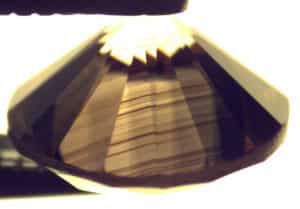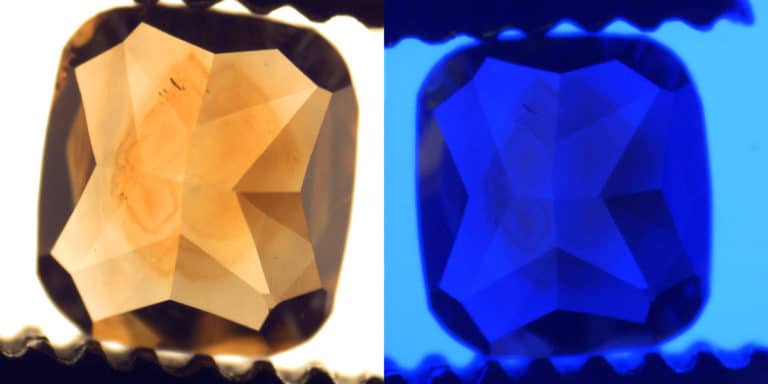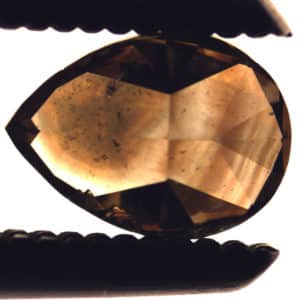By Wade Abel, CG, Director of Gemological Services, AGS Laboratories
There are interesting and forceful circumstances that create the brown color in brown diamonds. The brown color in these diamonds is a testament that the journey to the surface is not one that is easy or free of structural changing forces; stresses that can actually move atoms in the crystal structure.
The process that is attributed to the color in brown diamonds is called plastic deformation: the slipping of the crystal structure along planes of the crystal lattice by the pressure and forces of the earth during the diamond’s formation and emplacement, or journey, to the surface (Fisher, 2009). This creates vacancies in the crystal lattice that affect the way light is absorbed in the diamond creating the brown color along these planes. This is also referred to as brown graining. For a diamond to be considered fancy brown, this must be plentiful, creating linear color zoning.
Areas of brown color can also appear as concentrated areas of color following the cubic structure of diamond growth. Cubic color zoning usually has defined outlines around the area of brown color.
Cubic color zoning in a faceted brown diamond may be localized to one area. If the localized color is taken into consideration when the diamond is cut, the depth of color may increase in the diamond. For example, a zone of color near the culet of a diamond may influence the appearance of color throughout the diamond based on the reflections and direction of light passing through the diamond. Cut can increase the appearance of color in colored diamonds if the path-length of the light passing through it is increased. The longer the ray, the more opportunity for the light to be absorbed, increasing the saturation or depth of color.
In addition to strain (caused by plastic deformation), other trace elements can create color centers that may cause the appearance of brown color. These are referred to as “amber centers” and are thought of as specific arrangements of nitrogen atoms within the crystal lattice that is associated with brown graining (Massi, et al, 2005).
Occasionally both cubic and linear color zoning will be present in the same diamond.
Whatever the form of color zoning, the cause is the same. A unique and specific occurrence that creates areas that absorb specific wavelengths of light creating the brown color in these diamonds. Each diamond is unique and the creation and journey to the surface for a natural brown diamond is a difficult and (literally) stressful one.
Click here to learn more about brown diamonds, view videos that display their various color accents as well as a video featuring Jason Quick, RJ, Director of AGS Laboratories, discussing the AGS Laboratories Colored Diamond Document.
References
Fisher, D., Brown diamonds and high-pressure high-temperature treatment, Lithos (2009)
Massi, L., et al, The “amber centres” and their relation to the brown color in diamond, Diamond and Related Materials (2005)


